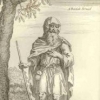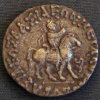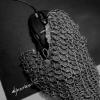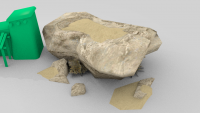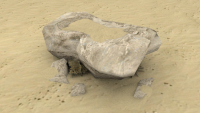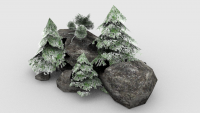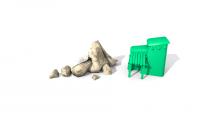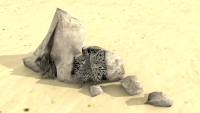Leaderboard
Popular Content
Showing content with the highest reputation on 2015-03-17 in all areas
-
Hi i was wondering why my videos have so much views thanks for posting them there i wanted to do the same I will keep making videos from this glorious RTS! I enjoy this game soo much.3 points
-
Of course I prefer something like AOM. That was very good. But if stay with droplist it would be better I think to group them like how I propose. wraitti: You saying then we could give a "culture" to the civs in the civ Jsons and then they could be group that way?3 points
-
3 points
-
I know this thread was last replied to 6 years ago, but I just wanna point something out. The stuff that Anthony said is interesting, because at first it seems too unbelievable to be true, but if you start to research the Celts deeply, you'll find all of his information is backed up.2 points
-
This screen is excellent. The possibility to have a faction randomly chosen in a set of selected factions is a must-have.2 points
-
Wowgetoffyourcellphone: that's what I'm saying, yes. I definitely agree with you on the AoM-like screen, though it would be good to have all civs in one screen and no scrolling, so maybe have smaller shields. But that's implementation details.2 points
-
2 points
-
Do you know the game Battle for Middle earth ? An RTS based on LOTR. They made a Helm's deep map that was considered very accurate by the community. Just type BFME helm's deep map for picture on google.2 points
-
So no stan? I'll get the shovel, and we can bury stan tonight? To lions suggestions... Saturnalia would be fantastic if a19 came out in december. Also, Strategos (or strategoi) would be great there was more emphasis on military/formations in the alpha.2 points
-
2 points
-
2 points
-
Nah, we're not going to use a name like that for an Alpha =) Though on the topic of using a personal name for an Alpha, maybe we should name the W one Wood (if we reach that high a number of Alphas, but I think somewhere around there is probably what we'll end up with). In memory of one of the first and most influential members of the team: Ken Wood ( http://wildfiregames.com/forum/index.php?showuser=63 and the low usernumber should tell you something of how early he was a part of the team), who died in 2006. But that will have to be decided later, I just wanted to write it down so it's easier to remember.2 points
-
that is the idea you can dock too The idea is give you the same behavior like visual studio or another programs that allow you to do your own "workspace" as you wish.In my channel there is another video that show about dock enjoy2 points
-
2 points
-
I am certain, You all saw this coming. PoniesAscendant_alpha_01.zip As far as progress, there will be at least 3 factions in the finished mod; earth ponies, pegasi, and unicorns. Earth pony faction is nearing completion, Pegasus faction progress is a little further behind. They are in need of balancing, but I'll get on that. As a bit of a disclaimer, I'd like to say that this mod plays a bit differently than 0 AD, the buildings are more resilient, expensive, and take longer to build.Towers have much more health, and an reduction to the amount of damage they can dish out. This makes them more defensive rather than the offensive buildings we're used to in 0 ADFortresses are your "final phase" so to speak. Difficult to destroy, and a training platform for a faction's elite units and advanced siege.Units have more health, and train at different ranks depending on the building they're trained from.There are four unit types, skirmisher units, soldiers, armor, and anti armor (not including siege, support, and ships)Ranged units cannot hold their own anymore, spread and splash make them useful for softening up formations and small skirmishes, though they counter anti armor. They are also friendly fire capable, so be wary of that.Armor is extremely expensive and slow, but very effective against soldiers and skirmishers.Antiarmor doubles as anti-building but their vulnerability to pierce damage may urge a player to employ siege engines insteadPegasus faction may be a bit overpowered at the moment, even if they do have less units at the moment.0 AD's AI pathfinder restrictions regarding lag and naval maps still applyTemples have a massive slow heal radiusSlingers, archers, and buildings have a much higher rangeSomething I forgotSomething else I probably forgotI forgetThis was just a fun project for me to get to know how to employ different art assets a little better, Hope you like it so far! cheers1 point
-
Wildfire Games, an international group of volunteer game developers, proudly announces the release of "0 A.D. Alpha 18 Rhododactylos", the eighteenth alpha version of 0 A.D., a free, open-source game of ancient warfare. This alpha features improved performance, an in-game technology tree, a new map type ("Nomad") and more! Easy Download and InstallDownload and installation instructions are available for Windows, Linux and Mac OS X. 0 A.D. is free of charge and always will be. Although you might find some people selling copies of 0 A.D., either over the internet or on physical media, you will always have the option to download 0 A.D. completely gratis, directly from the developers. Moreover, you can redistribute the game and modify it freely as long as you abide by the GPL. You can even use parts of the art and sound for your own projects as long as you abide by CC BY-SA. No "freemium" model, no in-game advertising, no catch. Top New Gameplay Features in This Release Nomad Game Mode: Players start with only some citizen soldiers and female citizens, and no civil center, and must build a base from scratch. In-Game Technology Tree: Allows players to see which faction can research what technologies, when and for how many resources. The default AI, Petra, now supports saved games. Toggle groups of units between marching in formation and breaking formation. New Seleucid buildings The new buildings are the house, storehouse, farmstead, towers and temple. The Civic Center is a placeholder for now and will be updated before the Seleucids are finished. Performance Improvements and Other Changes Under the Hood SpiderMonkey upgraded to v31: The Javascript engine SpiderMonkey has been upgraded to version 31. This greatly improves performance and reduces memory usage a bit. We have also adapted our code to support new and advanced memory management techniques and features of SpiderMonkey such as Exact Stack Rooting, Moving GC and Generational GC. In addition, this version of SpiderMonkey includes a new and improved version of the performance profiling tool called "Tracelogger", which has helped us identifying and fixing different problems and further improving performance. C++11 upgrade: C++ is the main programming language used for our Engine and we now support the C++11 standard, which was finalized by the ISO committee in 2011. It took a while until the standard was supported well enough by the third party tools we are using, mainly C++ compilers. Last but not least, we dropped support for older C++ compilers in order to move to the new version. As a consequence, we have also been able to remove some workarounds for bugs and missing features in these old compilers. C++11 brings many new and useful features our programmers can use and it was a requirement for the SpiderMonkey 31 upgrade. More Efficient Fogging and Visibility Calculations: These calculations keep track of what each player knows about all objects in the world. For example, you might see a tree with half of its resources remaining in the Fog of War. Another player might have more recent information because of scouting and knows that this tree has already been collected completely. This kind of information is now stored and processed more efficiently, which improves performance a lot. New Wildfire Games Server: The new Wildfire Games server hosts different services such as the multiplayer lobby, our IRC bot, the website and also the newly implemented autobuilder. The autobuilder builds 0 A.D. from source code for artists, players and other people who should not have to build it manually, and can now check itself with automated tests. (The payments for the hosting plan and server license are made possible thanks to our donors!) Selected other improvements: Several AI optimizations, reduced lag when selecting units, and more.Improvements to the Atlas Editor Right-Click Rotations of Multiple Objects: Normal behavior: Rotate objects in circle, Ctrl+Right-click: Rotate each of the objects individually in place, Shift+Right-click: Keep rotation but move in circle. Atlas now checks for unsaved changes when closing a map. Atlas now shows when objects are placed in invalid locations by highlighting them in red. Show template names of selected objects. Copy and paste added to Edit menu. Numerous bug fixes.Getting SupportPlease see the "Get Support" page on our website to find ways to get help from the active and friendly 0 A.D. community. We are well aware there is some room for improvement in 0 A.D. Some known issues are: Lag, visual glitches or textures not loaded, missing animations and more. When you provide feedback, we would ask you to focus on some of the other points that could be improved. Thanks. Please Contribute!We are seeking volunteer contributors in programming, art, sound, documentation and more. Programmers are especially welcome and can get started immediately. Interested? Log onto #0ad-dev on QuakeNet on IRC and meet the developers. Also, you are invited to register on our forums and start participating! Why "Rhododactylos"?We name our releases according to development status ("Alpha" or "Beta"), successive release number (1, 2, 3, ...) and a word relating to the ancient world, in alphabetical order ("Argonaut" for A, "Bellerophon" for B, ...). "Rhododactylos" means "rosy fingered" in Greek and is one of the poetical epithets of Eos, the ancient Greek goddess of the dawn. According to the legend, she would rise every morning from her home at the edge of the ocean and open the gates of heaven for the sun to rise with her "rosy fingers" or "rosy forearms". (Thanks, ltms!) For the next alpha, we welcome fan suggestions for words relating to the ancient world beginning with the letter S. Keep it original and related to the time frame portrayed in 0 A.D. (appx. 500 BC - 1 BC)! Subscribe to 0 A.D. Development News Contact info for press, bloggers, etc.: aviv@wildfireLATINgames.com without the capitalized name of a language spoken in ancient Rome.1 point
-
We got a name suggestion via email, so I thought I'd start up this topic already1 point
-
Here is my modification of the "Survival of the Fittest"-map. I dont think its yet done especially in terms of balancing, yet I would very much appreciate you testing it and submitting your ideas here For all who do not know this map: You start with a base with no resources, and a woman in a valley in the middle, where treasures (resources) are lying around. Collect the resources, and build up your city to prepare for the soldiers, that will attack you after some time. More (and stronger) soldiers and treasures are spawned, until only one player is left standing, who will be the winner. Changelog: Have fun I will update this as soon as I commit more changes. (Updated: 17.03.2015) The zip file contains the map files, it needs to be unpacked to 0ad/binaries/data/mods/public/maps/random. You can also download it from http://trac.wildfiregames.com/ticket/3102 Regards, NiAypa SurvivalOfTheFittest_NiAypa_2.zip1 point
-
I am a historian, focused mainly on Irish anthropology, but I do enjoy studying iron age Celts. Just, some minor little bothers, I suppose. I do like the direction, just, some mentions. You say Celts saw the bow as a cowardly weapon, and, some did. But, some Celts, and some demi-Celts (notably Raetians) actually had large numbers of bows. The Raetians even had a kind of early longbow, and thick arrows. The Celts also used massive numbers of javelins of different types, as well as large numbers of slings. I believe it was a Greek author who said they could actually shade the ground briefly with the huge numbers of missiles they'd put in the air before charging. Ranged weapons were extremely common, though bows were biggest amongst certain groups; other Celts mainly used huge numbers of slings, and practically every Celtic soldier would have some javelins (early Irish military law even required a village be able to provide two javelins and a shield for every able-bodied man and woman of 14 years up in the event of a raid or invasion). Slings were a common hunting weapon for small game; practically every family would own at least one for hunting small fowl. Your description has a misconception of what a band of fianna is. Fianna were Irish youth mercenaries, most of them were bandits when not working as cheap mercenaries. The use of the general term of 'fianna' as an intentional place to send youth didn't begin until after Cromwell's conquest of Ireland. So many Irish were dispossessed of land, and rightly infuriated, they sent their children off to these bands to disrupt British rule in Ireland. It's not really the same thing in medieval or earlier Ireland. They were largely feared and seen as dregs, often given the alternative name 'gasraidh', 'rabble'. A more appreciative name for some bands was 'Amsaigi', 'Wildmen', but those were typically experienced, veteran mercenaries; professional soldiers without a regular employer (hence 'wild', not meaning they were savage, simply, they had no home; they typically had good armor and gear though from years of experience). Amsaigi were usually not criminals, and were sometimes tied even to what one might call a kind of proto-company; different bands assembled together that would sell their services to a wider variety of people, and organize themselves for such employment. There were also 'fianna' in the sense of the semi-mythic regional full armies, but those too are different. Like, the Fianna Eireann. They weren't composed of 'youths', they were headed by experienced soldiers and had a strict entrance 'exam' composed of numerous very stressful physical tests. Course, the whole thing is moot unless one involves Ireland; Fianna is not a term used by Gauls or Britons, and we actually have rebuilt a good deal of their language. Cintusos would probably be what you mean; a youth levy, which trained young men who wanted to join the warrior class to fight. Not all Celts did that though, just those who wanted to become professional warriors; as in, doing nothing but being a warrior. Most Celtic children would be apprenticed to learn a trade or work on a farm. Also, there's some misconception of buildings. At least in the sense of walls. Celtic walls were some of the best built in the iron age. They were essentially identical to renaissance fortress walls in basics of construction. They would be packed with sod, and wood tresses, to absorb stress from projectiles or rams, and then faced with stone. An earthwork ramp would go up behind the wall so one could easily get up. The wall itself would often be slanted slightly, and built at the top of a hill. There may be an additional wall or two (or three; some of the biggest cities dug up show evidence of as many as four of these stone-faced walls), and even beyond that, ditches and earthwork ramparts. Actually attacking a Celtic wall was insane. Note that Caesar doesn't really try in earnest to ever do this again after his experience with the Aquitanians. 500 Soldurii (the royal guards of the Aquitanian king) killed far greater their number because Caesar tried to force his way into their fortress. The gates would be doubled; there'd be one gate, an open space, then a second gate that actually opens into the town. This creates a place were defenders would hurl missiles and such down at the attacker if they ram open the first gate. Their defenses were actually really impressively made. Gergovia was a debacle for the Romans. Alesia had to be waited out, and built around to keep reinforcements out. Alesia was already disadvantaged since the food stores were low, having been used to feed Vercingetorix's army. Also, round houses, no longer common in most of Gaul by 400, pretty much being replaced by rectangular long houses. Later, major cities such as Bibracte and Gergovia would have tenements as much as four stories tall (though only two of those have been found, most are two stories), roofed with tiles. These predate Roman conquest, by the way. These buildings would be made of stone. Cities with them would also have paved roads, using cobble, sod, and wood planks. They were divided into temple regions, housing, and the market, as well as a region that would be almost like a series of large buildings for production; mints, smiths, tailors. Their actual cities in Gaul didn't look at all like people seem to expect. Far more civilized looking. They had running water and cess removal (using copied Greek pumps), large buildings, orderly roads, etc. Little villages would certainly be different, just hoping a big Celtic town won't look comically barbaric, if history is the goal. Farmsteads are different, that's what villages built up around. A land holder, noble or ignoble, would bring in lots of slaves, paid laborers, etc., they'd build a village around his house, and work his fields, or in his home, or run a road house or whatever, in that area. There you'd see much smaller homes; one or two rooms. Early cities would have similarly small housing, but, as time went on, they grew substantially. Farmsteads didn't need bigger homes to cram more people into a pre-planned fortress though. The average Celtic home in Gaul would be one to four rooms, not necessarily one room. British homes, more often simply a one room round house. Gauls built up to stone houses being more common in some areas as time went on. It's very regional in many ways. However, the big cities would have an almost late medieval look; stone-and-wood construction, tile roofing, large numbers of people living in close quarters. On Gauls fighting; Gauls carried standards and horns for a reason. It was to arrange and order an attack properly. It wouldn't be that disorderly, though a charge would quickly become disorderly. However, they seemed pretty capable of moving quickly, arranging themselves reasonably, etc. The Irish may provide an example. The Irish used banners (iron age Celts used metal standards, one of the things Rome adopted from them) and horns. Professional soldiers would be assigned to a group based on their basic gear, more or less (if you have a sword or axe or whatever, you go over here), in multiples of 50 or 100, each given a standard to follow, and a hornblower. They would each have a captain, typically a high ranking ignobleman, or, a noble. They'd form a shieldwall or phalanx, throw their javelins, and charge; cavalry was typically used for flanking or as harriers. They could respond swiftly to ambushes. Telamon is a good example. While a Gallic loss, the Roman record of it was that the Romans were actually frightened at the orderliness of the Celtic host, in that they quickly formed into two lines to face the two main bodies of the Roman force (course, then the Romans sent cavalry up on a hill). Also, while armor would be more rare early in the period you've got (500 BC), by about the mid-100s BC, armor is growing much more common. Mail was already in regular use though as the armor of private retinue though, not just nobility, but, their bodyguards. Gauls kept regular armies as well; they weren't the bulk, which would mainly be the levy, but professional soldiers were a regular thing. In seasons when not fighting, they'd probably be the majority of Celtic mercenaries fighting in nearby regions (professional, career mercenaries though travelled from Gaul much further; the Ptolemaic dynasty of Egypt, to augment their Galatians, got more Celts, by hiring them from Gaul; those guys I doubt were 'seasonal' mercenaries). Would be interesting, if possible, to have some better (though not noble) Celtic soldiers able to be 'rented' to other factions one is at peace with, having them revert in the event that said Celtic faction goes to war, representing seasonal mercenaries. Some Gallic terminology, dunno if you have this. Celts didn't write much, or at least not much that survived, but they did write some (and they did put together the Coligny Calendar, which is all in Gallic), and we have a few pertinent nouns that might be helpful; Neitos - 'Champions', literally, is applied to soldiers it seems Cingetos - Soldiers (lit. 'Marching Ones') Epos - Horses, seems also 'horse-rider' Marcos - Horsemen (non-military; probably more like 'horse-owners') Brihentin - 'Knights' is the common translation; mounted on horseback, well-equipped nobility with a lance, shield, javelins, and a sword, essentially Eporetos - Chariots (Chariots were used by Gauls at the battle of Telamon) Cidain - Chariots (Belgic/Gallic British) Catucarbo - War-Wagon (a heavy chariot) Cintusos - 'Youths'; a youth levy of young men who are trying to become soldiers (not a general levy) Cauaros - Giant or hero Magus - Servant, young boy, something like a squire Uiros - Men Decametos - One tenth of an army, or one tenth of a regiment, depending on context; literally 'tenth' Maru- - 'Great', 'Powerful', 'Large' Ponto - Boat Pontone - Ship Bagaudas - Guerillas or pirates, essentially -tae/-ae/-dae - 'Men of', for example Gaesatae; 'Spearmen/Men of the Spear' Of Celtic women, and this also incorporates some articles on the site. They weren't exactly equal to men in everything. They had all the same rights, but there are just some misconceptions. Female rulers were possible, but not that common. Actually leading required one to lead in battle efficiently. The infirmed and such could not. This would also apply to a pregnant woman. Also, one article says Celtic men were like Spartans in that they were advised to obey their wives at home. There is no proof of that at all. In Irish legal records from the Christianization of the island onward, one of the main sources of dispute in marriages was a husband seeking a divorce because his wife nagged him too much. It was a very common complaint. Though, mind, a woman could initiate divorce as well, and, that was apparently a big complaint for women too (being nagged by their husband) to the point of divorce. There was social fluidity, a woman technically could get any job, become a soldier, whatever, like a man could, but possibility and having a decent chance is a touch different. Having a lengthy combat experience record would be good to get you in a good position to be elected a local headman, or selected from your family as the heir to a noble title. It didn't mean women couldn't get those, they certainly did. The lady of Vix and Cartimandua are phenomenal examples (they get overshadowed by Boudicca though, cause we know her story better, but one should mind she was empowered first by the death of her husband, the Iceni king, who dictated her inherit the title, splitting it with the Roman emperor, not an election; she was not a daughter or niece being given a royal title by election as a tanist, which I think is far more interesting, and was probably the case of Cartimandua). Just a minor thing. Women were technically for the most part, considered equals, but Celts were not egalitarian or completely all inclusive and nice to everyone. They would be way ahead of most of their contemporaries in the sense of how they treated women, but, they shouldn't be seen as to have treated them equally in every sense. Actually, it's a funny thing (this is a tangent, to forewarn, bout Gaels, but it also explains, for Celts, women were perfectly equal). Gaels traced lineage patrialinically. It's a misconception they followed matrialinical succession. They didn't. Only one title among Gaels was traced matrialinically, and that was the king of Scotland. Also, they didn't really go with 'succession', they had a tanistic election, which is probably a relic of how Celts originally chose heirs. It worked like this. A new noble rises to his title. His heir will soon be elected from a pool of potentials possessing rigdarna, the 'materials of the king'. This heir must not be indebted, paying off a fine, injured in a grevious or crippling manner, and capable of leading men in battle. He does not need; to possess a noble title, own land, have great wealth (though he must be a freeman), or really, anything else. Though, those all help. He SHOULD possess the qualities of intelligence, a just nature, a pious nature, experience in combat, and/or experience in fiscal matters. First to be examined for this will be mutual grandsons of the current noble's paternal grandfather (for the Scots' king, this would be a maternal grandfather first). Then, the same great-grandfather. This opens a massive pool. From there, if one is not agreed on yet, you can examine maternal grandfather, then maternal great-grandfather's pool of grandsons and great-grandsons. Only after this do you begin to examine women for the position. This creates an obvious disadvantage for a woman to be selected; not impossible, it happened sometimes, but, it was much more difficult. Now, this doesn't mean women didn't come into landowning positions easily though. These were guidelines only for noble titles. Most Celtic land wasn't owned by nobles, but by free holders who were indebted to nobles monetarily; they owned the land they worked though, and could will it to who ever they wanted, including their daughters. Medicine. We know Celts had actually very good medicine. Surgical tools are among the most common metal items found in any major settlement outside of coins or weapons. They are found near kilns usually, implying heating was used for cleaning them. Also, from preserved bodies or skulls, we find scar tissue that reveals successful, complex surgery. In northern France, several skulls have been found dating from periods long pre-dating Celts, right into the Celtic period, with scar tissue evidencing successful brain surgery (a scar cut in the skull, the bone was replaced, and the person lived long enough for the bone to fuse properly back together). This implies knowledge of disinfectants of some kind, and probably anasthesia. In Irish mythic account, the hero Cethern is placed in a barrel of a slurry made from cattle being ground up to heal his stomach wounds, from which his innards were spilling. He was then stitched up. Here's the trick. That would actually work to save his life if he was losing so much blood. It's the most basic form of a bovine-human blood transplant, which wouldn't be otherwise noted anywhere up till the American Civil War. Just some minor other things, probably more pertinent to the game itself; The Britons had a very superior strain of grain grown at the time. We still can't reproduce it, but he have remnants of it from bodies and so on. It's mentioned also a few times. It would have yielded vastly more grain than others at the time, and would've probably been healthier. It's just a thought. The Celts formulated the most accurate calendar in Europe at the time. The Coligny Calendar is singularly one of the most advanced, complex calendars ever made prior to the advent of electronic computers. While it does not perfectly account for days (each year would have a lost day), the calendar was made by people aware of that; they had a measure in it for correcting the days, by moving days on certain dates to other dates. The calendar would be able to properly find the phase of the moon perfectly any day you wanted in the future, no matter how many years, if you were willing to do a little math. It can perfectly nail the beginning and ends of seasons, proper days at any point in the future. Without modern computing, we could not do a calendar so well without extensive mathematics, but the Coligny Calendar is, when one understands the system, relatively easy to use. Dunno if that could mean anything in the game, but an interesting aside, and a kind of testament to the methods of druids; to be able to work this thing out without extensive writing. By the way, it is the single most extensive piece of writing in the language of Gauls. Despite apparently lacking math in some arenas, their knowledge of astronomy and the pertinent mathematics was simply phenomenal. Celtic mercenaries. They were so common, I do hope there'll be some system in place to see them (and other mercenaries) used. Some mercenaries you may not think of; the aforementioned Amsaigi from Ireland, for British Celts, perhaps (though the stories about them also see them serving various kings in Gaul), mid-way through a game abouts. They'd be interesting maybe just for a different appearance, as they'd be Gaels, the post-Brythonic Irish. You know, knee-length shirt, bare-legs, a shoulder cloak. Shield. 'Girdle of Steel' (one of the coolest and most overlooked pieces of ancient armor in my opinion, pretty much confined to Ireland and parts of Britain). A slashing sword imported from Gaul. Javelins. A spear. A sling. A helmet. Professional, tough mercenaries, equipped to mess up anyone, though they'd probably be historically accompanied by younger, less flashy 'squires'. Celtic equipment. The Celtic soldier was capable of fighting in a unit. They did so repeatedly, and made pretty good account of themselves. They were not absent of discipline, but it's more, a sense of heroic culture got the better of them at other times, and made discipline a bit tricky. But, if they really needed to, they could stick together. Thing is, all the actual warriors (not the 'levies', but those in the warrior class who made a career of it) were probably all pretty much a self-contained fighting unit, if needed. Javelins should be extremely plentiful, of various types (darts up to the big heavy gaeso); practically every Celt should have some realistically. But, some, would actually have a number of weapons. Javelins, sling, spear, shield, a sword or axe, and a backup knife was entirely possible on one person, intended to give him the edge in almost any combat situation. Will soldiers be able to carry more than one or two weapons? Most Celtic nobles should have at least the javelins, spear, and sword. Of course, lighter troops would be more reliant on just the spear and their javelins, maybe a cheaply made shortsword or long knife. On that note; shortswords. Very common with Celts. Substantially cheaper make, usually, than the more famous Celtic swords. Perfectly within a young man's ability to afford, assuming he has a paying job or is perhaps training to be a soldier. The Galatians and assumably Gauls were actually somewhat impressive with these. I'll explain (like anyone cares at this point, Jesus I ramble). The Galatians, at least, were remarkable with shortswords. They'd give them to their younger warriors often, or they'd buy them. Because of their enemies, these fellows had a special job, based on new archaeological studies about the city-state of Pergamon. Much like Renaissance anti-pike soldiers, such as Spain had in plentiful number, these fellows would approach a pike phalanx, and use their light shield (square, rectangular or round, not the long shields of more popular Celtic shock infantry) to knock the pike up and roll under the formation. Then, he'd stab a man in the gut with his short cutting and thrusting sword. A pike phalanx needs rigidity, and everyone to hold fast or else it can collapse quickly. A bunch of these guys doing this at once would pretty much simply break a pike phalanx. Some would try and hold steady and be stabbed, others would drop their pikes to try and draw a sword before being killed. Either way, the potency of the formation is utterly smashed, opening the floodgates, as it were, for a devestating Celtic charge, javelins and all, smashing into the now disordered formation. It may explain why the pikes of Pergamon began to have the second row kneel; to intercept those men who'd otherwise simple roll under the formation. Having either of those maybe, a kneeling phalanx, or a phalanx opening manuever like that would be interesting. Maybe a differentiation between raiding parties and armies could be done via standards and horns. An actual army regiment (don't know how it'd be arranged) would have a standard, horn, and captain with it. They'd only follow orders and attempt to defend themselves for a time before trying to charge an enemy (more or less, after being sufficiently goaded into a charge). A raiding party would act more freely if near anything they'd be free to kill or destroy, and lack any command structure. Just a thought. Know that may be unnecessarily complex. I do think goading enemies to attack should be involved if possible. More disciplined troops would resist it better, but anyone, either by being attacked at a distance, or yelled at enough, will probably reach a breaking point. And don't say the Romans didn't, cause they did. Repeatedly. Faesula for example (Celts laid an ambush and more or less dragged the Romans into it and slaughtered them, before Telamon). They would, though, be relatively more resilient to it with the institution of Marius's reformed army (prior to that I'd figure they'd be just as susceptible; the Romans weren't always so disciplined as they were in the more popular view of the legion, which is the post-Marian legion). In that vein, morale would be nice, don't know if I've ever seen it done in a game like this. Morale is low enough, units begin to break (and units near them reduce in morale, potentially leading to a mass withdrawl) to their camp or city or whatever, making a fighting retreat in good order (throwing or firing missile weapons, stopping briefly to engage in a melee perhaps). Lower, they just bolt, don't attempt to fight, and head for safety. Too low, they simply flee blindly away from the enemy, possibly getting spread over the area aimlessly, or trapped between different groups of enemies. Morale would be dependent on how well-off an individual soldier is, how many of the enemy have died in a certain period of time, how many allies nearby, etc. Just a thought though, I'm really not certain of practicality. And if you're already instituting a morale system, by all means, ignore my babble-ry. Celtic trade, prior to the advent of the Roman Empire (which had with it, the conquest of Gaul) was some of the most extensive in Europe with the exception of Carthage. Celtic objects are found into northern India and possibly China (truth is, the Chinese government isn't always forthcoming about non-Chinese or otherwise East Asian artifacts found in their country; it's why the study of the Tocharian mummies is so slow, but, c'est la vie, archaeology and anthropology is dicey sometimes). A big part of the Aedui-Arverni/Sequani dispute was control of trade lanes. ...That and the Arverni willfully killed merchants from the Aedui or their dependents, which was a huge bad mark to Celts, and was part of why the Biturges (themselves formerly having been rulers of the Gauls) collapsed to political pressure and sided with the Aedui. The Aedui were legally inheritors of Gaul from the Biturges politically, but it's not like the Biturges were happy with that. However, after Germanic incursions and Belgae invasion made the Aedui look bad, power shifted to the Arverni. The Aedui and their close allies, obviously bowed out of siding with them. The Biturges, like many tribes, stayed neutral. They sided with the Aedui though when it was found the Arverni were freely commiting offenses against the common Gallic law. Law. That should be something for Celts perhaps. Celts were fracticious. Very factional, tribal. But, they did have a unified code of law, and three places are recorded where druids went to discuss law and other matters, from all tribes available, to keep the different tribes and kingdoms with a unified basic legal code. These are; in the lands of the Carnutes, in Aulercia, a hidden council, the island of Anglesey, as it's called today, and Teamhair, or Tara, in Ireland, also the coronation site of Irish high kings. Their legal code should maybe come into play somehow, or the councils. It was very complex, and relatively civilized. It's also what allowed them to sometimes actually form long-lived kingdoms or confederations; reliance on a single legal code. This code was also important in Celtic identity, because, Celts didn't recognize themselves all as 'Celts'. Only two Celtic people are known to have called themselves 'Celt'; the Gauls (Celtae), and the central European (not Italian) Boii, who ruled most of central Europe. They called themselves 'Celtae', or 'Keltoi', according to the Greeks. However, they all did have a unifying, organized religion (though the religion itself had many regional variants, the druids themselves had some unity) and the basics of their legal code. This allowed even a distant unity, between people who probably didn't view themselves as the 'same' most of the time; they could say to eachother though that they shared a sense of what was properly licit or illicit, which is a powerful uniter. Have to remember, the continental Celts said they all descended from the Sky-Father (Dispater), but they broke it down further, that specific tribes came from certain gods or heroes. And that can lead to a lot of factionalism. But, they could all respect they had the same idea of right and wrong, even if they were fighting eachother. Their law, in some abstracted way, can hopefully play a part. The Gaels! Heh...no, I suppose that won't happen. Really, they wouldn't be affecting Rome much till the late 400s, aside from raids. Niall of the Nine Hostages probably had a major affect on the reason Rome withdrew from Britain, but, he died in the early 500s, out of period. Other than that, there are Irish raids, some Irish mercenaries, and maybe the Attacotti were Irish (it's one of several theories). That and they wouldn't show up till 200 - 50 BC. Before that they'd more resemble Britons. After that, very different clothing and such. I think I'll stop now.1 point
-
1 point
-
Not sure if this would be something worth pursuing, but I recently posted it in another thread. Thought it was relevant to this discussion: ...there was an idea in the past that you could make a selection in Atlas of multiple entities and save them as a "group". These groups could be then be added to a player's custom pallet of tools. So perhaps it was a collection of trees, rocks, shrubs and bushes - and you define/call that "TemperateGroup01" or something. Atlas saves (or "copies") the x,y (not z) and rotation of each entity/actor into that group xml file. This could then be recalled at any time later and "pasted" onto the terrain, conforming itself to the terrain. The group could be rotated like what is featured in the new alpha release video. The group would conform to the terrain and the z height would be altered for placement as required. I'm not sure if this was documented or implemented, but it might be worth looking into to achieve what I think is what your going after here with this farm idea?1 point
-
When in texture paint mode, you can shift-click on a texture and that texture will be automatically assigned to your paint brush.1 point
-
I dont understand why you think that cav shouldnt kill support units, even melees footmen should annhilate rangeds if not protected by melees, a sword cav is an armored dude running to you straight at 40 km/h with a sword, hitting you from 1 meter up your head, and still in the game it takes them the 10 hits to kill an archer, wich is basically just a dude with a bow and arrows. Of course you can use cav speed to harass, but that's only possible if they counter support units hard. Otherwise the defender can simply harvest and once cav is in sight, press H. Spearmen have 3x damage against cav for a reason.1 point
-
I thought it might be a good idea to explain to you how to make the most of your git(hub) repository and work effectively in a team or make sure your master branch is always clean and stable. That's where one of git's most powerful feature comes in: branching. Let's kick right off! In this tutorial I'll be using the Github for Windows client as I experienced it to be intuitive and user-friendly. Also I'll use Aristeia as example. Righto, in your program create a new branch. Do so by clicking the '+' button as shown in the image below: Give it a name and the program should show something like this: Make the changes you want. Now we need to publish the branch to make it available to others (you can also make changes after you published your newly created branch): Open your browser and go to you Github page, if you did everything correctly you can now see your branch online: If you think your changes are ready to commit, click on the green 'Compare & pull request' button. After that your screen should show something like this: Give it a name and a description and click on the 'create pull request' button. There you go, a pull request is created and it directly offers a discussion thread. Other team members are also notified of your pull request: If other people noticed bugs you can append new commits in your github for windows client. If they think the pull request is good enough they can merge it (or you can do it yourselves if you have the rights to do so): Tada! You're changes have landed into the master branch! You can now delete your branch or use it for further development (and create a new pull request over time)1 point
-
I agree about the harassing role of the sword cav. Spear cav though, should be the "army flanking" unit. A well-timed charge with spear cav into a bunch of archers should destroy them. With this we would have two really different roles for these units and therefore each civ will have to adapt more to their unit available1 point
-
1 point
-
In Photoshop™ use 3 layers for the subject (background layer is black). Bottom wolf layer is outer glow with noise (20% opacity, 25% noise). 2nd wolf layer has outer glow (20-25% opacit). top wolf layer have drop shadow to complete the effect. Sometimes if use "sharpen edges" it give a little cartoony look to subject for good portrait style. Looking at art depository Pureon uses separate layer for hand paint glow effects, while I just use layer style. For glow color use off white or creamy color.1 point
-
1 point
-
I think in the movie, the river is small and there is a part of this river "underground". When the mine explodes, it reveals the underground river so it looks large but only after explosion. For your scenario I think just a smaller river is good.1 point
-
I saw this crazy GDC 2015 video today on the art assets in UE4: Starts exactly at 15min Photo scanned, and semi.-automatic de-lighting/shadowing to obtain the raw diffuse color. Clever stuff.1 point
-
1 point
-
Congratulations! It would be nice to add also a balance changelog!1 point
-
The original proposal has the advantage of grouping ethnic groups (Celts, Greeks) using alphabetical sorting, while with your approach they should be explicitly sorted (what requires some additional data, but provides more flexibility).1 point
-
I'd do the opposite, like Brythonic (Celts) Gauls (Celts) Ptolemaic (Egyptians) Spartans (Greek) Athenians (Greek) In the end we could have a selection screen kind of like AoM.1 point
-
1 point
-
It's not even been 24 hours and you've already run out of patience? To me that says enough about whether or not someone should get commit access. You're welcome to participate in the development of 0 A.D. on the same grounds as everyone else: if you're not part of the team you can still be a part of discussions and submit changes as patches, but don't have commit access to SVN.1 point
-
1 point
-
I see, I'll use MAPS AND BIOME GUIDE for specific examples. I look forward to Thanks for sharing the wealth. Some things were completely new for me (conformal unwrapping, using pivot point...). I was using quick'n'dirty Smart UV Projects, but your technique with pivot point is able to achieve better resolution. I'll play with that... Desert rocks with some vegetation... ..I left it a little angular as before. Is it too much? .."sand dune" test (225 faces). Good idea or not? (I suppose that sand is default ground in desert biome, so it should merge together and look more realistic with sand dunes.) On it. My "polar" design test (I know - trees are terrible - experiment. But do you like those stones?):1 point

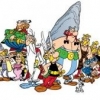



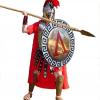
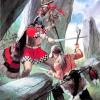

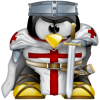

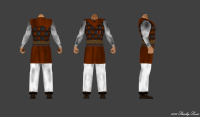
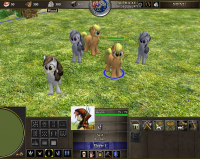

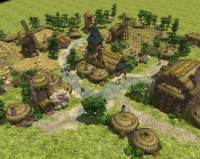
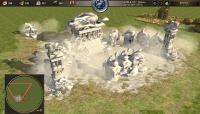
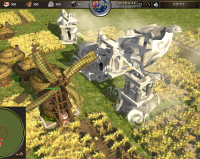
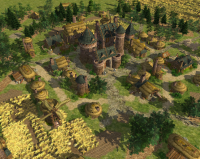
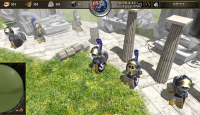
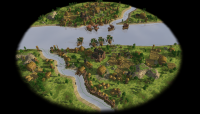
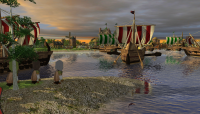
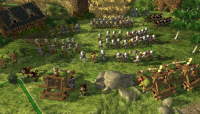
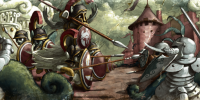
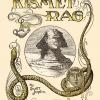
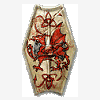
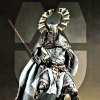
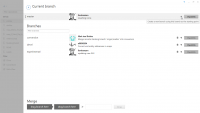
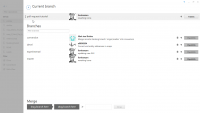





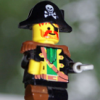
.thumb.png.0d87fc71cb8a644c5d862ceabac1e0d5.png)
